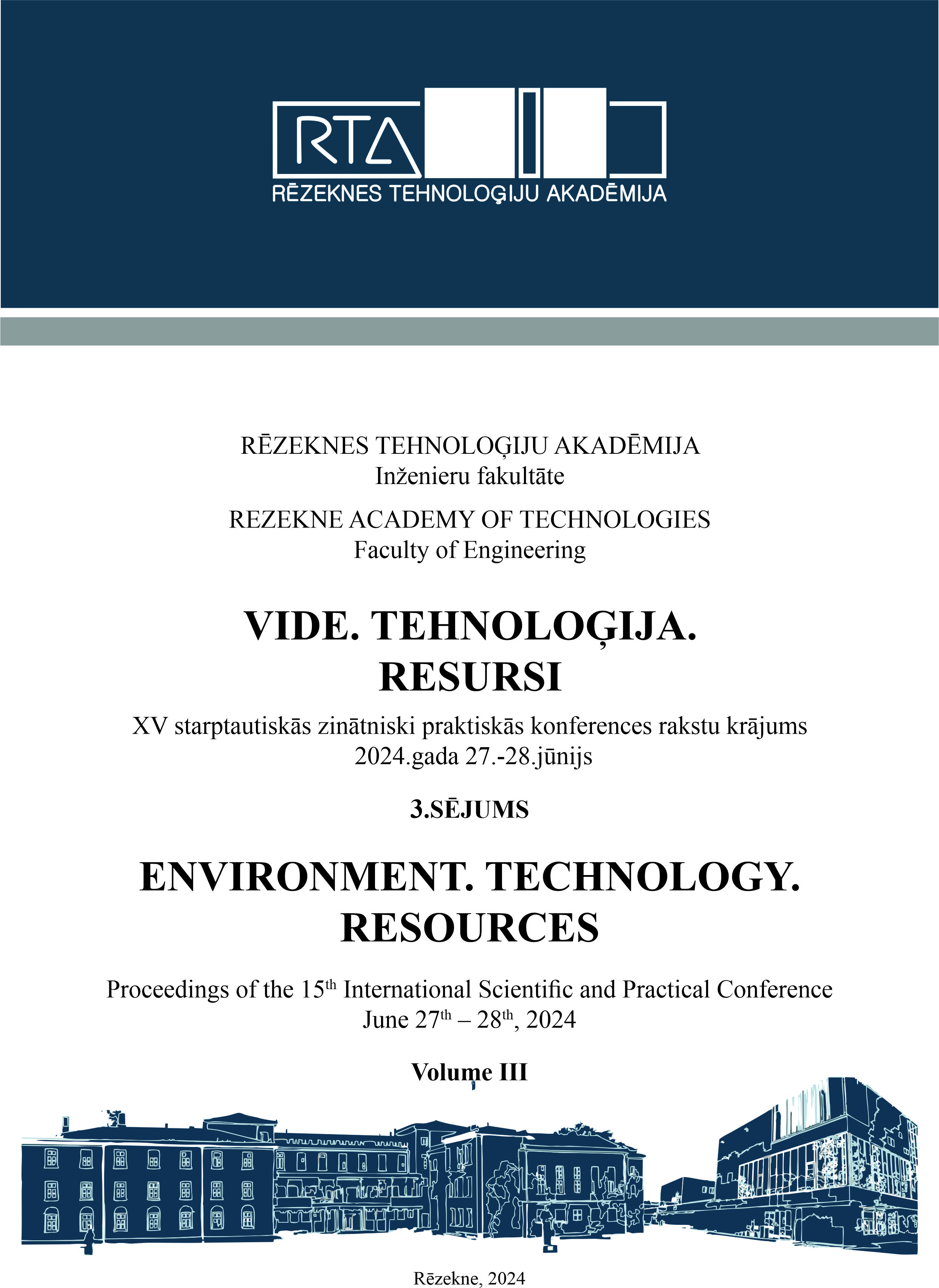IMPROVEMENT OF TECHNOLOGICAL PROCESSES TO REDUCE TOTAL INACCURACY DURING BORING DEEP HOLES
DOI:
https://doi.org/10.17770/etr2024vol3.8127Keywords:
inaccuracy, facing, holes, deformationsAbstract
Ensuring accuracy of the shape of holes processed by boring is essential for increasing productivity and economy of the process. The great influence for ensuring the prescribed operational and quality indicators during boring is the stability of the technological system and in particular the total deformations. This determines the goal of the present development, namely reduction of elastic deformations and displacements of the elements of the technological system.
Downloads
References
H. Metev, K. Krumov. Determination of inaccuracy by milling taking into account the phenomenon of technological heredity. 9TH International Scientific Conference "TechSys 2020" – Engineering, Technologies And Systems 14-16 May 2020, Plovdiv, Bulgaria. IOP Conf. Series: Materials Science and Engineering 878 (2020) 012049. doi:10.1088/1757-899X/878/1/011001.
S. Sabev and P. Kasabov, The influence of feed rate and cutting speed to surface roughness during hole boring of AISI 304 with anti-vibration boring bar. AIP Conference Proceedings, (2022), 2449. 060004, DOI:10.1063/5.0091006.
C. Deng, J. Chin, Hole roundness in deep-hole drilling asanalysed by Taguchi methods. Int J Adv Manuf Technol 25(5-6): 420–426, 2005.
T. Aized and M. Amjad Received, Quality improvement of deep-hole drilling process of AISI D2, The International Journal of Advanced Manufacturing Technology 69(9-12), Published online: 8 August 2013 # Springer-Verlag London 2013, DOI:10.1007/s00170-013-5178-4.
L. Francis, D Xavier, D. Elangovan, Effective Parameters For Improving Deep Hole Drilling Process By Conventional Method, International Journal of Engineering Research & Technology (IJERT) Vol. 2 Issue 3, March - 2013 ISSN: 2278-0181.
F. Zou, J. Dang, X. Cai, Q. An, W. Ming, M. Chen, Hole quality and tool wear when dry drilling of a new developed metal/composite co-cured material. Proc. Inst. Mech. Eng. Part B J. Eng. Manuf. 234, 980–992, 2020.
K. Sentyakov, J. Peterka, V. Smirnov, P. Bozek, V. Sviatski, Modeling of Boring Mandrel Working Process with Vibration Damper. Materials 13, 1931, 2020.
L. Lie, S. Beibei, H. Haitao, H, Nonlinear system modeling and damping implementation of a boring bar. Int. J. Adv. Manuf. Technol. 104, 921–930, 2019.
L. Kon et all., Complex nonlinear behaviors of drilling shaft system in boring and trepanning association deep hole drilling. Int J Adv Manuf Technol 45(3-4):211–218, 2009.
C. Deng, J. Chin, Hole roundness in deep-hole drilling as analyzed by Taguchi methods. Int J Adv Manuf Technol 25:420–426, 2005.
K. Weinert, O. Webber, C. Peters, On the influence of drilling depth dependent modal damping on chatter vibration in BTA deep hole drilling. CIRP Ann Manuf Technol 54(1):363–366, 2017.
E. Kilickap, M. Huseyinoglu, A. Yardimeden, Optimization of drilling parameters on surface roughness in drilling of AISI 1045 using response surface methodology and genetic algorithm. Int J Adv Manuf Technol 52:79–88, 2021.
G. Chern, J. Liang JM, Study on boring and drilling with vibration cutting. Int J Mach Tool Manuf 47(1):133–140, 2007.
M. Amjad M, Parametric Analysis Based Quality Improvement of Deep Hole Drilling Process of AISI D2. M.Sc. Manufacturing Engineering thesis submitted to the University of Engineering and Technology, Lahore, Pakista, 2012.
Downloads
Published
Issue
Section
License
Copyright (c) 2024 Angel Lengerov, Silviya Salapateva, Georgi Levicharov

This work is licensed under a Creative Commons Attribution 4.0 International License.


